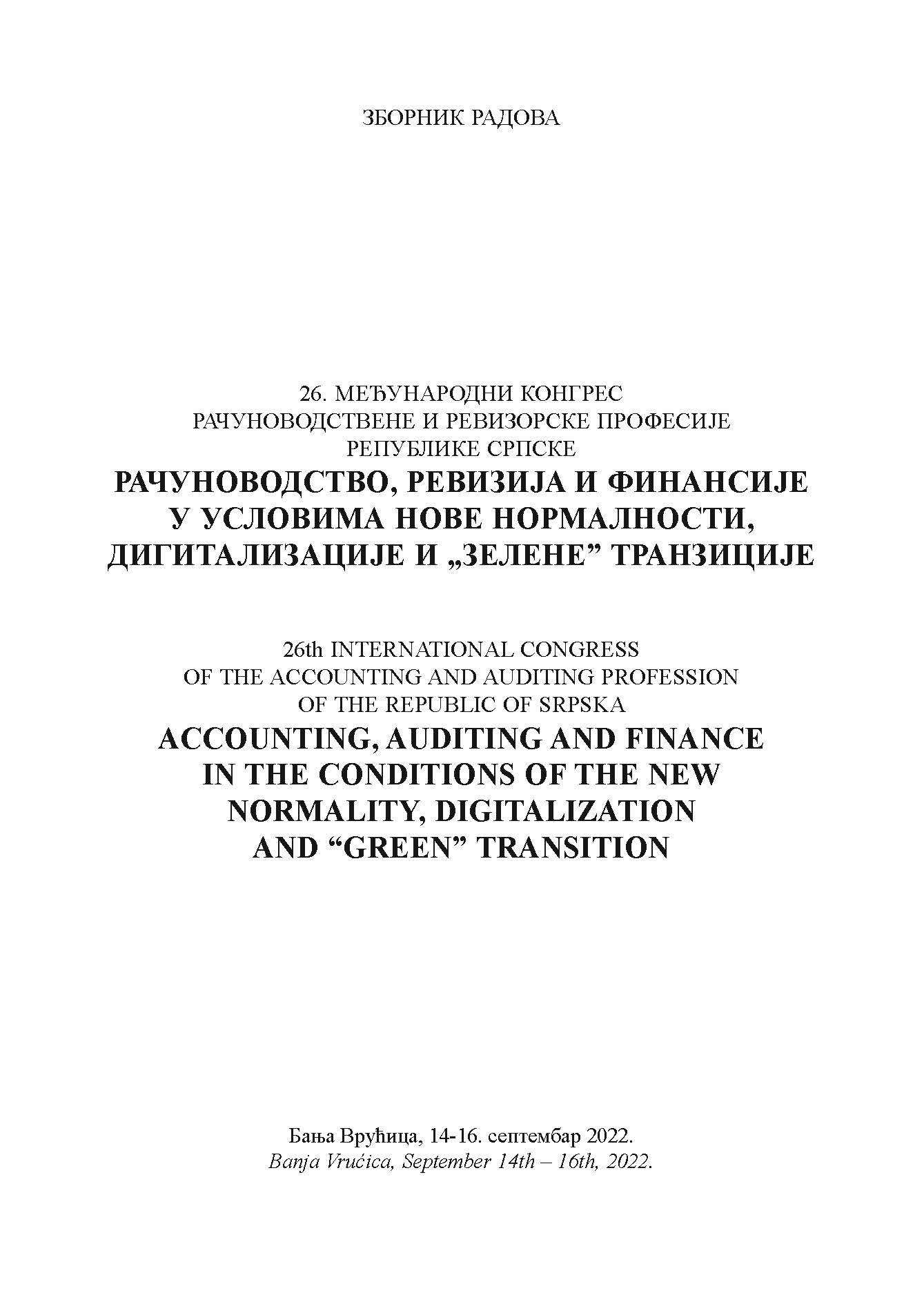ИНТЕГРАЛНИ СИСТЕМ ФИНАНСИЈСКОГ ИЗВЕШТАВАЊА КАО ИНФРАСТРУКТУРА „ЗЕЛЕНЕ“ ТРАНЗИЦИЈЕ
INTEGRAL SYSTEM OF FINANCIAL REPORTING AS INFRASTRUCTURE FOR THE GREEN TRANSITION
Author(s): Dragan Đuričin
Subject(s): National Economy, Business Economy / Management, Financial Markets, Accounting - Business Administration
Published by: Savez računovođa i revizora Republike Srpske
Keywords: green transition; circular model of growth; industrial policies; automatic macroeconomic stabilizers; ESG measures; sustainability report;
Summary/Abstract: The intention of this paper is not only to voice our concern over the ongoing complex crisis and related mega messes, but also to raise awareness about the importance of adopting more adequate view in search of solutions. Climate change and related disbalances in physical and biological subsystems are evident to everyone, the same as their impact on socio-economic subsystem of the planet as system dynamics in terms of J. Forrester. In more than two centuries, the prosperity based on cumulative effects of four industrial revolutions has brought humanity into a state of climate emergency, the stage of threatening preconditions that put in jeopardy the prospects of sustainable and inclusive growth. Indeed, until the green transition to a net-zero economy, imbalances will continue to grow in a non-linear way. Fact-based scientific research is warning us that the rise in global temperature reaching 1.5 degrees Celsius above pre-industrial levels dramatically increases the probability of the most apocalyptic consequences, including the risk of biotic feedback loops. The green transition entails a radical transformation of the energy sector and land-use sectors such as industry, agriculture, buildings, mobility, forestry, and waste as the biggest emitters of greenhouse gasses. The green transition would challenge economic orthodoxies. For more than two centuries, liberal capitalism, whether conventional or neoliberal, has been continuously marked by a split between two categories of liberty, negative and positive. To remember, a negative liberty is giving economic agents the right to have freedom from the government interference, supposing that they are “homo economicus” led by self-interest and economic rationality. Inversely, a positive liberty is a right to be “human”, capable of respecting global commons, apart from the freedom of having private interests. For more than five decades, the neoliberal variant of capitalism, referred to as shareholder capitalism by J. Friedman, and market fundamentalism as its prevailing policy platform, primarily fueled by negative liberties, failed to deliver enough human well-being. The logical consequences of market fundamentalism, or giving the market the role of an almost exclusive coordination mechanism, are a linear model of growth and the economic policy platform colloquially named the “Washington Consensus”. In neoliberal variant of capitalism, in addition to internal structural imbalances inherent to the neoliberal economic system and imbalances due to the misconceptions in providing a responsive policy platform, too many new forces related to external asymmetric shocks, such as climate change, biorisk increase, and an overwhelming impact of (geo)politics on the economy and society, have been unleashed. In correlations with the existing ones, new forces are producing mega disbalances. An orthodox neoliberal approach is not particularly suitable for the economies with a delay in economic development aspiring to catch up. To find the solution, we must start with a paradigm change, both in microeconomics and macroeconomics, by setting up a new nexus of economic rules for the digital age, capable of explaining the behavior of an ever-changing economic system when universal connectivity is a dominant free good. The formulation of anew model of growth and related economic policy platform follows. The model of financing the transition from shareholder capitalism to progressive capitalism and related performance measurement system are at the center of such a radical change. Following the previous logic of reasoning, the material is organized in three parts, except Introduction and Conclusion. The first part is dedicated to the context for change. The following two parts focus on the key question and possible answers, respectively, by proposing a new nexus of economic rules, along with the circular model of growth and heterodox economic policy platform as generators of the new economy, complemented by the integral system of financial reporting. The last one is dedicated to the financing of the green transition.
Book: 26. МЕЂУНАРОДНИ КОНГРЕС РАЧУНОВОДСТВЕНЕ И РЕВИЗОРСКЕ ПРОФЕСИЈЕ РЕПУБЛИКЕ СРПСКЕ
- Page Range: 21-44
- Page Count: 24
- Publication Year: 2022
- Language: Serbian
- Content File-PDF

